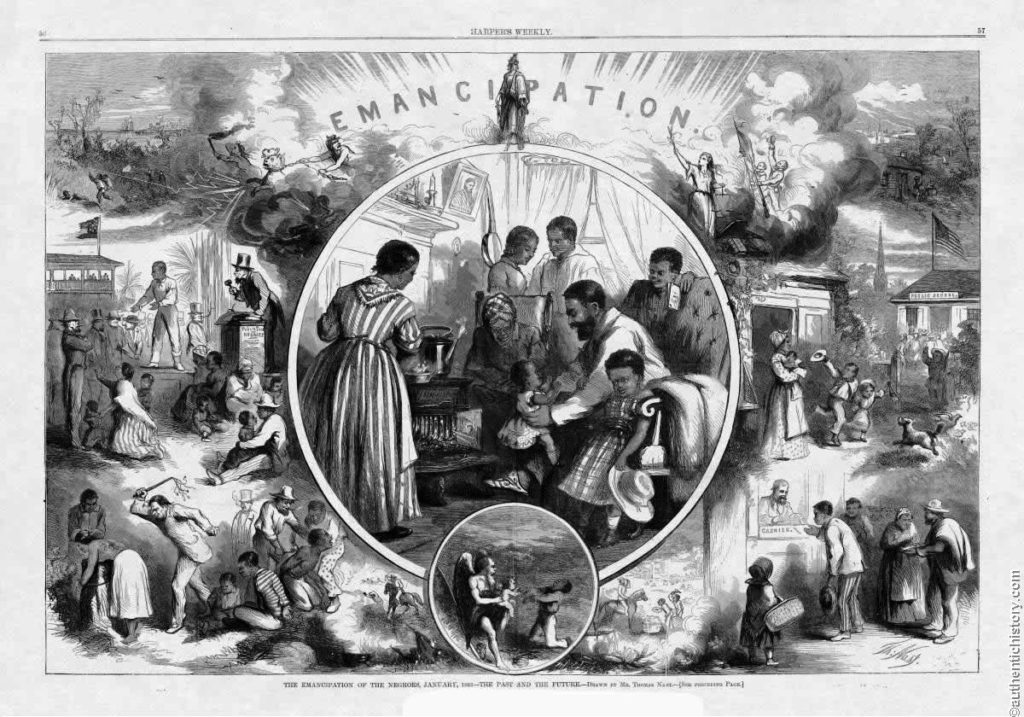Baltimore Heritage would like to share some information on the city’s role in the slave-trade in the 19th century. One of our dedicated volunteers, Richard Messick, has spearheaded this research and in his guest blog below, he gives us some insight into what he has found. Thank you Richard!
I once took a tour at Hampton National Historic Site lead by Park Ranger Anokwale Anansesemfo, called “Forced Servitude at Hampton.” The tour described the variety of labor used by the Ridgely family to operate their estate: indentured servants, prisoners of war, and enslaved people. It was a profound and moving experience that sent me on a research project to learn more about slavery in Baltimore.
After its incorporation in the late 18th century, the population of Baltimore grew very quickly along with the expansion of the new country. One of the many “trades” that grew along with the city was the sale of people. Several things contributed to this development. First, local farmers had shifted from a labor-intensive tobacco crop to the growing of cereal grains, which required less work and contributed to a surplus of slave labor in the area. Secondly, Eli Whitney invented the cotton gin in 1793, which quickly and easily separated cotton fibers from their seeds. The cotton industry then became incredibly profitable and that fueled a desire for more land and forced labor in the South. The third factor was that the importation of people for sale was outlawed in 1808.
— Richard Messick


Thank you. I’m forwarding this to my Boston family, who also have some Baltimore roots. Some things to be proud of, some things to acknowledge and remedy. This map and your book recommendation are a good start on that work.
Thank you!
Thank you for your book as we Continue to search for our ancestors roots in Baltimore.
I disagree with this assertion:
which caused an increase in the need for cheap and enslaved labor in the South.
In my opinion the depravity of the planters and their belief in White supremacy led to an increase in the demand for enslaved people. I’m not aware of any published material documenting that planters were forced to use a work force consisting of enslaved people. So I can’t be sure.
Thank you. That sentence was poorly worded and I have corrected it.
I enjoyed your presentation. A slave owner by the name of Mary Ann Emory, owned Anna Maria Bailey on 06/07/1860, when Mary lived in Easton, Talbot County, MD. On 07/18/ 1860, Mary lived in Baltimore, MD, District 11, and Anna is not shown. I believe Anna was sold to a Tennessee slave trader between 06/07/1860 – 07/18/1860. Do you have names and bill of sales records of slave traders operating in District 11 during this period of time? Thank you.
As I recall, the lists in Mr. Clayton’s book are from shipping manifests. It is possible that Anna was transported over-land. Someone in the Maryland Department or the African American Department of the Enoch Pratt Library may be able to help with your search.
Thank you for your work. We at Govans Presbyterian are doing some truth and reconcilliation work. Our church was first constructed 1844 when the slave trade was in full swing.
Here is a contemperaneous description of slattery’s slave house
https://aadl.org/signalofliberty/SL_18420105-p1-09
Thank you for the link. I will add it to the entry on my map for the Slatter jail.
Are there records of sales that can be traced to owners? My assumption is no, but I have to ask.
I am researching a woman who was enslaved by Col. S. T. Bailey, and kidnapped from Vermont in 1844, and sent to Baltimore.
My first inclination is to refer you to either the Maryland Department or the African American Department at the Central Pratt Library, but I’d like to explore this as well.
When you say “owners,” do you mean buyer and/or seller? Also, are you trying to find out what became of her in Baltimore, i.e., was she then “sold South” or did someone purchase her to keep in Baltimore?
Thank you! I am grateful for all those who have enlightened me. And yes, now I know that oletha devan’’sculpture commemorates an enslaved couple who had worked at Lexington market, were Re-captured, and were sold at auction there.
I’m trying to find out if there were slave markets in Montgomery County. Do you have any suggestions about where I could find out that kind of information?
Looking for Information on -Goldhagen & Simon , Baltimore Maryland . Not sure if it was an auction house ,but the collar i have is also dated 1843 . Any information will help .
I just attended a lecture by Scott Shane about his book “Flee North”. He represented the slave trade as blossoming in Baltimore because the mid-central states could no longer grow tobacco on its overused land creating a surplus slave labor force. Selling slaves rather than feeding those they no longer needed coincided with the invention of the cotton gin making the South ‘King Cotton’ and slaves sold down there to work the plantations.